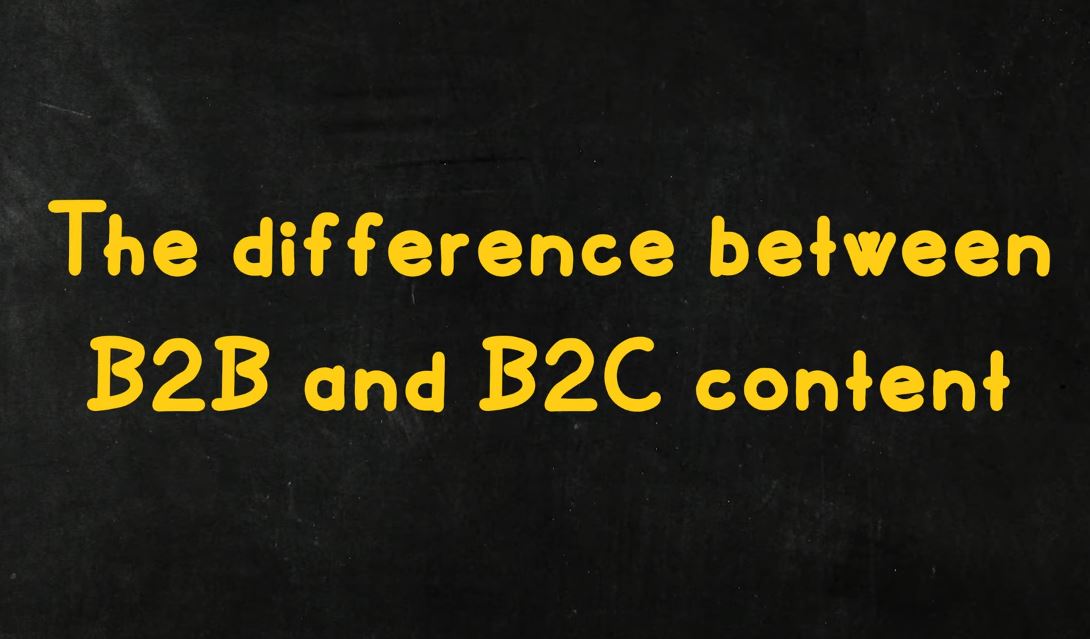As a B2B marketer, you likely know that much of the cookie-cutter content marketing advice online isn’t all that helpful. Your audience is smart, and if you’re just churning out generic content, it’s going to reflect poorly on your company. For most B2B companies, the goal isn’t just the quantity of leads but the quality. You need to ensure that your content delivers on both fronts. This guide will share strategies to help you achieve that goal, based on our experience working with numerous B2B companies across various sectors like Finance, Healthcare, Legal, Manufacturing, and more.
Understanding the Difference Between B2B and B2C Content
Fundamentally, B2B and B2C content aren't that different. However, there are specific hurdles when it comes to producing B2B content. The topics can seem less exciting compared to B2C counterparts. Remember, you're still selling to a customer; that customer is just part of a business. They have the same human need to be entertained and engaged. They will go through the same process: reading up about their problems, comparing different options, and educating themselves about the thing you’re selling. Content is the most effective way to convince potential customers to do business with you.
The Goal of B2B Content Marketing
The goal of B2B content isn’t just to create content for content’s sake or even just to create useful and interesting content. The primary goal is to educate the customer about why you are the best option for them. Every piece of content should not only be informative but also position your business as the superior choice.
Example: Packaging Client
For a B2B client that sells packaging, every piece of content emphasizes their excellent customer service, high product quality, sustainability, secure delivery, and customization options. Each piece of content guides the customer towards a purchase, with relevant calls to action and automated nudges using email marketing.
Using Positioning to Stand Out
In the competitive B2B landscape, it’s crucial to differentiate your business through your content. This starts with picking an aspect of your product or service that stands out the most and resonates with what customers want. It could be customer service, product quality, reliability, or any other unique selling point.
Example: Monzo Business Banking
Monzo’s business banking positioning is clear: "It just works, so you can too." This straightforward message stands out in the business banking world, where traditional banks often provide a cumbersome experience. Monzo’s content repeatedly highlights their benefits, like no monthly fees, free transfers, and 24/7 customer support, without directly mentioning competitors.
Teaching Your Audience Something New
Your content should be genuinely useful to your audience. Use it to solve a problem that your potential customer has. For example:
-
ISMS Article: An article comparing ISO 27001 vs. ISO 9001 targets people searching for these certifications, providing valuable information and nudging them towards the funnel.
-
Slack's State of Work Report: This guide targets people who might not even know they have a problem that Slack can solve, using valuable insights to get on their radar.
Creating Lead Magnets
Lead magnets are pieces of content that get people from just landing on your website to entering your funnel. Think ebooks, white papers, webinars, and original studies. They should offer something unique or in more detail than what's freely available.
Example: Hybrid Work Guide
During the hybrid work transition, we created a guide for office managers, promoting it through paid media, email marketing, and the website. This campaign generated significant attention and leads, boosting the client’s visibility and authority.
Example: BenchPress Report
Wow, a niche accountancy firm, produces an annual “BenchPress Report” with data exclusive to their industry. This gated content attracts their target audience, who must provide contact details to access it, allowing Wow to promote their services effectively.
Email Marketing for Nurturing
Email marketing is crucial for nurturing leads. Many B2B companies have email lists but lack a strategy. Effective email marketing involves sequences, automation, and behavioral targeting to move customers steadily towards a purchase.
Tips for Email Marketing
-
Segment Your Audience: Tailor emails based on interests, company size, or specific actions.
-
Automate Sequences: Use automated sequences to nurture leads, freeing up your sales team to focus on new leads and those ready to close.
Repurposing Old Content
Not all content needs to be new. Repurpose and update old content to keep it relevant and engaging. For example, we update our SEO book annually, creating excitement and leveraging existing research to produce blog posts, videos, and podcasts.
Offsite Content and Digital PR
Content marketing isn’t just about your website. Digital PR can get you in front of your target audience and improve your search rankings. Balance between high-authority sites and niche trade publications to maximize impact.
Creative Campaigns
-
Racking Safety Inspections: A creative campaign analyzing fictional workplaces from popular shows got mainstream coverage for a niche business.
-
Shutterstock’s Game of Thrones Campaign: Redesigning Game of Thrones houses as modern corporations generated buzz and engagement.
Optimizing for Search
Optimize your content for search to get found by people actively looking for solutions you offer. This increases the leverage and reach of your content.

